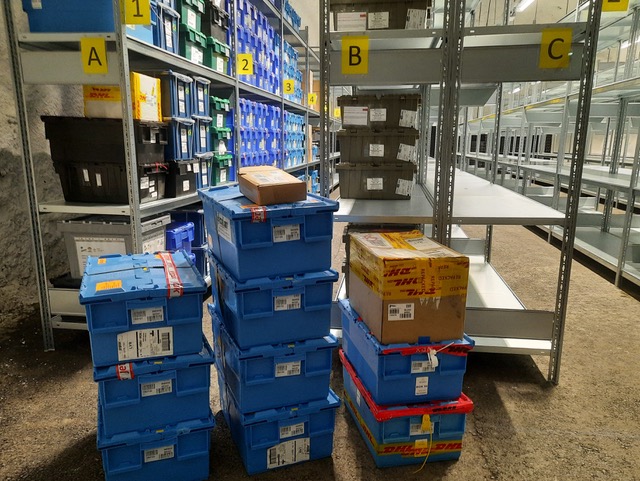
Strawberries and watermelons may not come to mind when picturing the frozen, barren landscape surrounding the Svalbard Global Seed Vault, but this week, seeds from both those fruits were deposited in the Seed Vault for long-term safekeeping.
Five genebanks made their deposits in the Seed Vault
In total, five genebanks sent almost 6 500 accessions for the February deposit at Svalbard Global Seed Vault; AfricaRice in Côte d’Ivoire, ICRISAT in India, Julius Kühn Institute (JKI) in Germany, SADC Plant Genetic Resources Centre in Zambia and the national genebank in Mali . The Seed Vault safeguards over one million seed samples in total, deposited by almost 90 genebanks over the past 13 years.
“We want to use a range of methods to ensure we properly conserve the genes of these valuable fruits”, said Monika Höfer, the manager of the JKI’s Institute for Breeding Research on Fruit Crops. The institute completed its second deposit in the Seed Vault this week, safeguarding seeds of wild strawberry.
“Step by step, we will add to our genebank’s collection in the Seed Vault. So far, we have only a few samples, whereas other genebanks store thousands”, Höfer said.
This deposit also marked a notable first: the seeds from the JKI’s are packed in a smaller unit that will beplaced into the same box as last year’s deposit from JKI’s to save space for future shipments. This is now possible thanks to an update to the Seed Portal Seed Portal – NordGen, the publicly accessible database that is containing information about which sees are in the seed vault and in which boxes they are stored.
Among the four other genebanks who deposited seeds this week was the national genebank in Mali, which has a total of 3,446 seed samples—primarily of sorghum, an important crop in the region—in its collection.
The national genebank in Mali made their third deposit
“This time we’re sending 324 different accessions of rice to the Seed Vault meaning that in total, a fifth of our collection is now having backup copies in Svalbard” said the head of the genebank, Amadou Sidibe.
It’s the third time the genebank, which is part of the Institut d’Economie Rurale (IER) in Mali, is sending duplicate seeds for backup storage in Svalbard.
“The main challenge for the national genebank in Mali is to find sufficient resources to conduct the work needed”, said Sidibe. “We also have a limited number of trained staff and a strong need for training and hiring additional skilled staff members”
Backup facilities needed to protect crucial seed samples
The Svalbard Global Seed Vault was opened in 2008 as a backup for genebanks around the world to conserve duplicates of their crop diversity. In a worst-case scenario, if a genebank collection is destroyed or becomes inaccessible due to wars or extreme weather events, or if its collection is damaged due to a lack of sufficient funding or accident, the duplicate seeds will still be available for the depositor to retrieve from the Seed Vault and start anew.
“The Svalbard Global Seed Vault is an excellent global facility crucial for saving our accessions and avoiding genetic erosion”, said Sibide. “It contributes to the worldwide sustainable use of plant genetic resources for food and agriculture”.
| Seed deposits February 2021 | Country | Accessions | Boxes | ||
| SADC Plant Genetic Resources Centre (SPGRC) | Zambia | 1442 | 19 | Sorghum, Maize, Wheat, Finger millet, Beans, Pea, Vigna, Barley, Cajanus, Water melon, Rice, Cucurbita | |
| Julius Kühn Institute | Germany | 4 | 1 | Fragaria vesca / smultron | |
| Institut d’Economie Rurale | Mali | 324 | 1 | Orysa / Rice | |
| AfricaRice | Cote d’Ivoire | 1023 | 2 | Oryza / Rice | |
| ICRISAT | India | 3700 | 7 | Sorghum, Pearl millet, Chickpea, Pigeon pea, Finger millet, Groundnut | |
